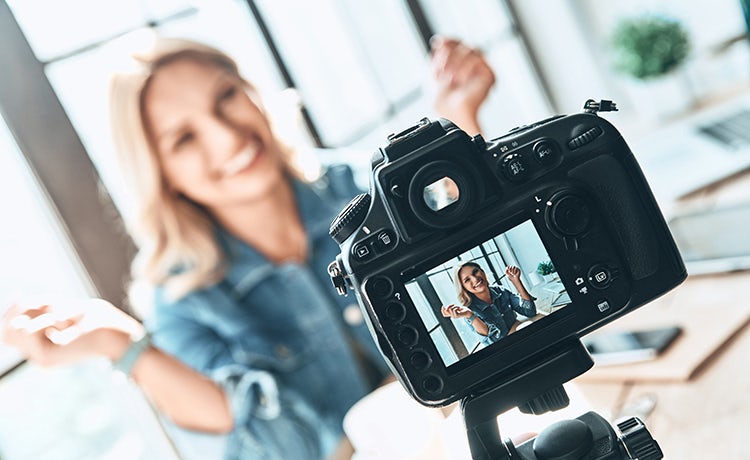Being up front about influencer partnerships won’t damage engagement
Consumers are becoming increasingly aware of branded content, but they are not adverse to influencer partnerships, so long as they are clearly identified.

The recent launch of the CMA’s influencer investigation is the latest in a series of industry actions demanding for greater regulation within the talent marketing arena.
It follows Unilever CMO Keith Weed’s highly-publicised call for greater transparency at Cannes Lions, and pledges from brands such as L’Oréal to only work with authentic influencers, and shows this rapidly evolving industry is being forced to face up to some of its failings.
Influencer marketing has already seen the first wave of policing, with the US leading the way in 2017, after influencers such as Victoria Beckham, Naomi Campbell and Jennifer Lopez all received warnings and guidance from the FTC to ensure they don’t violate ad disclosure.
In the UK, influencers including Made in Chelsea’s Louise Thompson and former star of the show Millie Mackintosh have both been rapped by the Advertising Standards Authority for insufficiently signposting sponsorship.
It’s not just headline-grabbing stories that are driving this move either; it’s industry-wide. A recent report by Influencer Intelligence reveals 73% of marketers feel the rise of digital-born consumers is forcing brands to be more transparent and genuine. Transparency adds value to an industry built on authenticity and it seems logical that the admittance of ‘yes, this is a paid post’, should cement trust between brand, influencer and consumer.
Positive response
Consumers are becoming increasingly aware of branded content, and are not adverse to influencers being compensated for a great campaign, so long as it is acknowledged. When executed correctly, consumers respond no differently to sponsored content and in many cases the response is better when partnerships are clearly labelled, according to data from Influencer Intelligence, which charts social engagement across over 100,000 influencers’ organic and paid content.
For example, Selena Gomez, the most followed person on Instagram with an audience of more than 141 million, regularly features a blend of organic content alongside sponsored posts as part of long-term collaborations with brands such as Coach and Puma.
She clearly discloses when content is paid for, and on average receives over 7 million likes per post, giving an engagement rate of 5.6%, which is significantly higher than her average per post engagement rate of 3.5% across the platform.
On Puma’s own Instagram page, which has 8.5 million followers, posts featuring the US singer and actress receive three to four times more engagement than other content and an average engagement rate of 5.4% per post.
As part of the partnership, Gomez helped design the brand’s Phenom Lux trainers, the sales of which raised $100,000 for the Lupus Research Alliance, a condition Gomez herself has publicly battled with.
An entrenched relationship between brand and influencer is demonstrated to the consumer not only by her involvement in the design process, but also by the brand’s investment in a cause associated with her. This additional investment promotes a two-way relationship that extends far beyond using an influencer’s channel as a shop window to access their audience. It shows the true value that an aligned message between brand and influencer can have with an audience.
Coach signed the star back in 2016 on a partnership that began as a campaign face role and later extended into a range of product collaborations. She regularly posts photographs on Instagram with Coach’s creative director Stuart Vevers and the latest ad from the brand demonstrates a deep-rooted relationship, playfully showing the star working at Coach’s HQ.
This involvement in product coupled with her personal relationship, not only with the brand but with Vevers, demonstrates to the consumer a genuine partnership where the influencer is part of the product’s DNA.
Her audience is aware that money has exchanged hands, but it feels authentic as she is open about the relationship.
READ MORE: Beauty influencers deliver ROI of £8.81, report finds
Finding the right fit
A genuine brand recommendation from a trusted individual, regardless of whether it has been paid for or not, will carry far more purchase sway than traditional advertising if there is a genuine affinity between brand and influencer.
To ensure this affinity is present, brands need to utilise the wealth of data that is available to them, not only to discover natural influencer and audience brand affinities, but also sentiment insight, which provides understanding into how audiences truly perceive an influencer.
As influencer marketing budgets continue to rise, and the industry becomes more rigorously governed, brands are becoming increasingly mindful of how to work with influencers to execute successful and virtuous partnerships.
Aware that buying habits are not swayed by the global notoriety of celebrity or an influencer’s millions of followers, brands need to ensure that resonance is at the heart of any decision-making process. Whether it be a beauty journalist’s vast professional knowledge of skincare, an ocean activist’s powerful voice on plastic-free products, or an emerging graphic artist’s unique aesthetic; it is these connections that have the genuine power to impact purchasing decisions and are values that brands need to use more often.
If a credible partnership between a brand and influencer who share a genuine affinity is achieved, the issue of admitting that money has exchanged hands becomes irrelevant.
Sarah Penny is head of content at Marketing Week sister title Influencer Intelligence, the recently rebranded platform for brand and talent partnerships.





